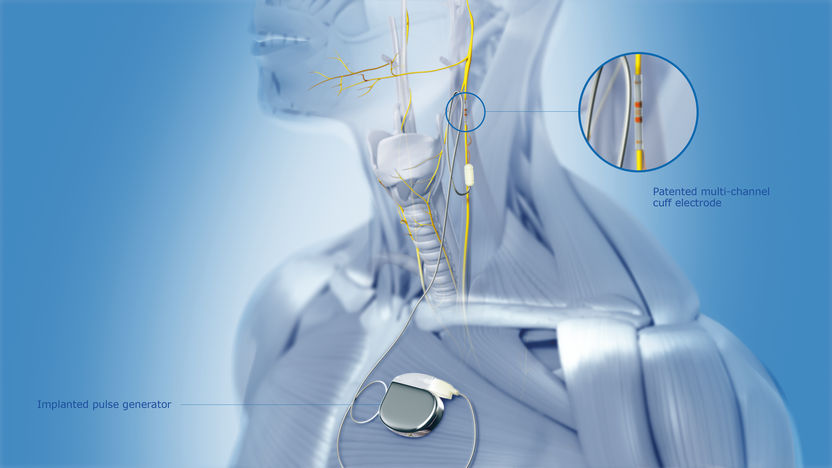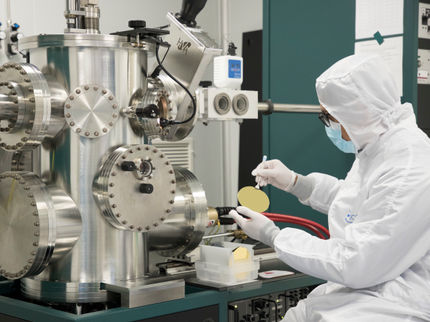Merck and B. Braun Join Forces in the Development of Bioelectronic Devices
Merck announced a collaboration in its new bioelectronics innovation field with neuroloop GmbH – a B. Braun subsidiary and early-stage start-up company. B. Braun SE is one of the world’s leading manufacturers of medical technology and pharmaceutical products. The collaboration seeks to develop a neurostimulator device that can complement the existing drug therapies of patients with chronic inflammatory diseases. While drug therapies often have broad systemic effects, bioelectronic devices can create localized and specific therapeutic effects by selectively stimulating nerves. The partners plan to adapt neuroloop’s neurostimulation platform to enable targeted treatment of chronic inflammatory diseases.

Neuroloops neurostimulation system consists of a unique, patented and very thin multi-channel cuff electrode that is wrapped around the vagus nerve. The electrode is connected to an implanted pulse generator in the chest area, which is wirelessly charged and programmed. The platform allows for selective stimulation of the vagus nerve and sets new standards for treating chronic diseases associated with autonomous vital functions.
Merck
“Bioelectronic devices show great promise in helping to improve therapeutic outcomes and efficiency for patients with chronic inflammatory diseases. By combining our expertise across electronics, medicines and drug delivery with the neurostimulation technologies of B. Braun and neuroloop, we aim to create novel modalities to enhance the quality of care for patients in several chronic diseases,” said Belén Garijo, Chair of the Executive Board and CEO of Merck.
“In line with our company philosophy of “Sharing Expertise”, B. Braun has always valued exchange and strong partnerships to move innovative solutions forward. We are pleased to strengthen our innovation power in a dynamic field like functional neurosurgery with Merck and neuroloop. In the healthcare sector in particular, innovations must quickly transform into successful business models. And to be successful, they must demonstrate clear value in the form of improved patient outcomes. The combination of our diverse expertise, experience and market access that our partnership brings will help decisively in this regard,” said B. Braun CEO Anna Maria Braun.
neuroloop GmbH will contribute unique technical expertise in selective neurostimulators to the partnership and Merck will add its key capabilities in material science and in vivo pharmacology as well as quality, regulatory and clinical expertise in the field of chronic inflammatory diseases. Initial data are expected to be available by the end of 2022, which will then be used to evaluate a clinical strategy to prove the safety and efficacy in patients. The full development will target approval in major markets, such as the European Union and the United States.
“Identifying the specific disease relevant nerve signal patterns and subsequently modulating these signals via stimulation are major challenges in the field of bioelectronics,” added Michael Lauk, CEO of neuroloop. “Together with the strong preclinical and clinical expertise of Merck and our platform which enables multi-channel selective stimulation, we are well positioned to potentially solve these crucial challenges and offer neurostimulator treatment to patients suffering from chronic inflammatory diseases.”
Rather than only providing stimulation, novel bioelectronic devices also have the potential to monitor the disease condition. Combining nerve signals with other accessible physiological datasets can help to create a holistic understanding for disease conditions. neuroloop has developed a platform to stimulate the vagal nerve for the treatment of chronic diseases in connection with autonomous body functions. The core of the platform is a multichannel cuff-electrode based on thin-film technology, which enables selective stimulation of specific fibers within the nerve. The primary focus is not only on high clinical effectiveness, but also on the greatest possible safety, minimal side effects for the patient and simple use for the caregiver.
The joint development agreement with B. Braun and neuroloop represents a milestone in the new Bioelectronics innovation field of Merck, which builds on the company’s experience and expertise in its Healthcare and Electronics business sectors. With a holistic approach, Merck designs and develops medicines and intelligent devices that provide ongoing care for patients beyond their treatment. Merck has a long-standing legacy in neurology and immunology, which, combined with significant R&D and commercial experience, will help to realize next-generation devices. This collaborative innovation project in the field of bioelectronics is being developed by the Merck Innovation Center, which aims to launch entirely new businesses and technologies between and beyond the company's current sector scope, bringing together people, technologies, and skills from within Merck and beyond.
B. Braun and neuroloop wish to explore a wide range of indications for the device, thus underlining the platform character of their fully programmable stimulation system to treat various chronic conditions using the same device by changing the software and stimulation pattern.





















































